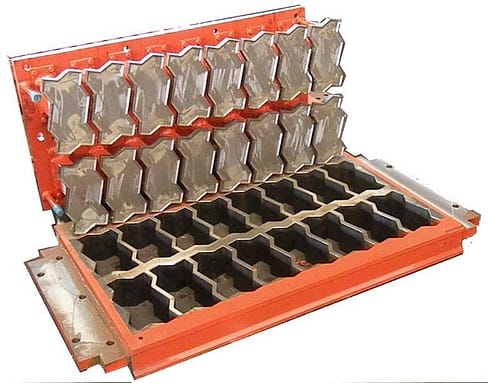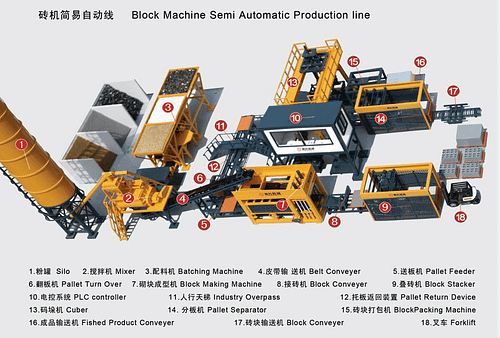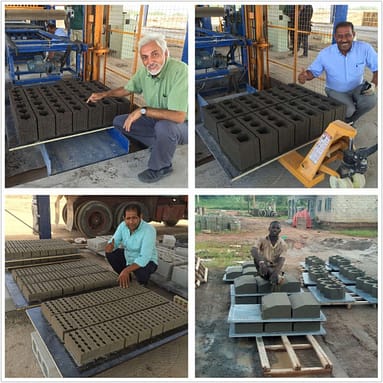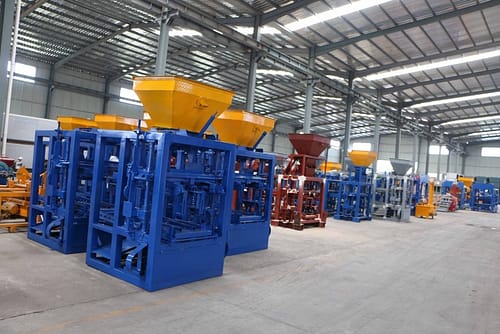A compressed earth block (CEB), also known as a pressed earth block or a compressed soil block, is a building material made primarily from damp soil compressed at high pressure to form blocks. Compressed earth blocks use a mechanical press to form blocks out of an appropriate mix of fairly dry inorganic subsoil, non-expansive clay and aggregate. If the blocks are stabilized with a chemical binder such as Portland cement they are called compressed stabilized earth block (CSEB) or stabilized earth block (SEB). Typically, around 3,000 psi (21 MPa) is applied in compression, and the original soil volume is reduced by about half.

The compression strength of properly made CEB can meet or exceed that of typical cement or mud brick. Building standards have been developed for CEB.
CEBs are assembled onto walls using

standard bricklaying and masonry techniques. The mortar may be a simple slurry made of the same soil/clay mix without aggregate, spread or brushed very thinly between the blocks for bonding, or cement mortar may also be used for high strength, or when construction during freeze-thaw cycles causes stability issues. Hydraform blocks are shaped to be interlocking.
Is CEB strong enough?
Using the stabilization standard, a pressed and cured block must be submerged in water for four hours. It is then pulled from the water and immediately subjected to a compression test. The blocks must score at least a 300 pound-force per square inch (p.s.i) (2 MPa) minimum. This is a higher standard than for adobe, which must score an average of at least 300 p.s.i. (2 MPa)






